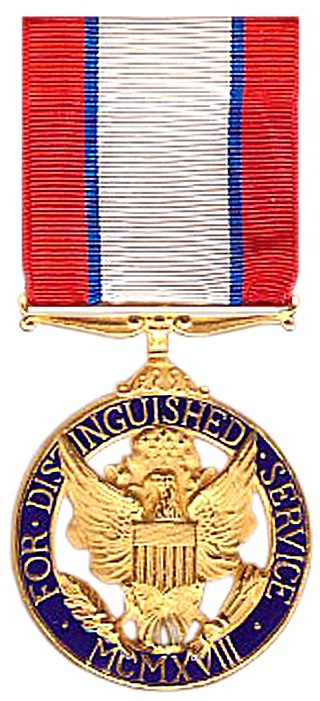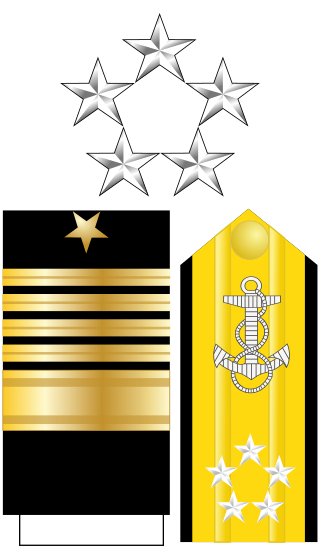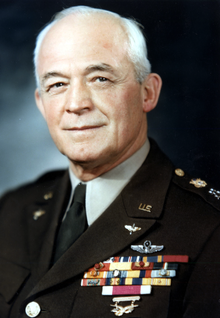
The Distinguished Service Medal (DSM) is a military decoration of the United States Army that is presented to soldiers who have distinguished themselves by exceptionally meritorious service to the government in a duty of great responsibility. The performance must be such as to merit recognition for service that is clearly exceptional. The exceptional performance of normal duty will not alone justify an award of this decoration.

Military ranks are a system of hierarchical relationships, within armed forces, police, intelligence agencies or other institutions organized along military lines. The military rank system defines dominance, authority, and responsibility in a military hierarchy. It incorporates the principles of exercising power and authority into the military chain of command—the succession of commanders superior to subordinates through which command is exercised. The military chain of command constructs an important component for organized collective action.
Chief Warrant officer is a senior warrant officer rank, used in many countries.

Fleet admiral is a five-star flag officer rank in the United States Navy whose rewards uniquely include active duty pay for life. Fleet admiral ranks immediately above admiral and is equivalent to General of the Army and General of the Air Force.
Wonsu is the highest military rank in the armed forces of North Korea and South Korea.

Modern Russian military ranks trace their roots to the Table of Ranks established by Peter the Great. Most of the rank names were borrowed from existing German/Prussian, French, English, Dutch, and Polish ranks upon the formation of the Russian regular army in the late 17th century.
United States military seniority is the method by which the United States Armed Forces determines precedence among commissioned officers, in particular those who hold the same rank. Seniority is used to determine assignments, tactical commands, promotions and general courtesy. To a lesser extent, historical seniority is used to recognize status of honor given to early United States military leaders such as inaugural holders of certain ranks or those officers who served as leadership during major wars and armed conflicts.
A flag officer is a commissioned officer in a nation's armed forces senior enough to be entitled to fly a flag to mark the position from which the officer exercises command.
General of the Army is a five-star general officer rank in the United States Army. It is generally equivalent to the rank of Field Marshal in other countries. In the United States, a General of the Army ranks above generals and is equivalent to a fleet admiral and a general of the Air Force. The General of the Army insignia consisted of five 3⁄8-inch (9.5 mm) stars in a pentagonal pattern, with touching points. The insignia was paired with the gold and enameled United States coat of arms on service coat shoulder loops. The silver colored five-star metal insignia alone would be worn for use as a collar insignia of grade and on the garrison cap. Soft shoulder epaulets with five 7⁄16-inch (11 mm) stars in silver thread and gold-threaded United States coat of arms on green cloth were worn with shirts and sweaters.
The Indian Navy (IN), the naval component of the Indian Armed Forces follows a certain hierarchy of rank designations and insignia derived from the erstwhile Royal Indian Navy (RIN).
In the United States military, a general is the most senior general-grade officer; it is the highest achievable commissioned officer rank that may be attained in the United States Armed Forces, with exception of the Navy and Coast Guard, which have the equivalent rank of admiral instead. The official and formal insignia of "general" is defined by its four stars.

The military ranks of the Soviet Union were those introduced after the October Revolution of 1917. At that time the Imperial Russian Table of Ranks was abolished, as were the privileges of the pre-Soviet Russian nobility.
In the United States Armed Forces, a lieutenant general is a three-star general officer in the United States Army, Marine Corps, Air Force, and Space Force.
The Indonesian National Armed Forces (TNI) uses a simplified ranking system for the three branches of Indonesian Army, Indonesian Navy and Indonesian Air Force. Most of the ranks are similar with differences for the rank titles of the high-ranking officers. Exception exists, however, in the ranks of the service members of the Indonesian Marine Corps. While Indonesian Marine Corps is a branch of the Navy, the rank titles of the Marine Corps are the same as those of the Army, but it still uses the Navy's style insignia.

A five-star rank is the highest military rank in many countries. The rank is that of the most senior operational military commanders, and within NATO's standard rank scale it is designated by the code OF-10. Not all armed forces have such a rank, and in those that do the actual insignia of the five-star ranks may not contain five stars. For example: the insignia for the French OF-10 rank maréchal de France contains seven stars; the insignia for the Portuguese marechal contains four gold stars. The stars used on the various Commonwealth of Nations rank insignias are sometimes colloquially referred to as pips, but in fact either are stars of the orders of the Garter, Thistle or Bath or are Eversleigh stars, depending on the wearer's original regiment or corps, and are used in combination with other heraldic items, such as batons, crowns, swords or maple leaves.
A general officer is an officer of high military rank; in the uniformed services of the United States, general officers are commissioned officers above the field officer ranks, the highest of which is colonel in the Army, Marine Corps, Air Force, and Space Force and captain in the Navy, Coast Guard, Public Health Service Commissioned Corps (PHSCC), and National Oceanic and Atmospheric Administration Commissioned Corps (NOAACC).
In many nations, the highest military ranks are classed as being equivalent to, or are officially described as, five-star ranks. However, a number of nations have used or proposed ranks such as generalissimo, which are senior to their five-star equivalent ranks.

The ranks and rank insignia of the Red Army and Red Navy between 1940 and 1943 were characterised by continuing reforms to the Soviet armed forces in the period immediately before Operation Barbarossa and the war of national survival following it. The Soviet suspicion of rank and rank badges as a bourgeois institution remained, but the increasing experience of Soviet forces, and the massive increase in manpower all played their part, including the creation of a number of new general officer ranks and the reintroduction of permanent enlisted ranks and ratings.
In Myanmar, military rank system and insignia are used by the Myanmar Armed Forces, its auxiliary services, some government departments and some civilian organizations.









